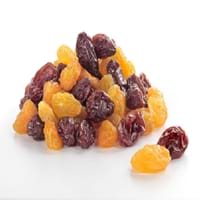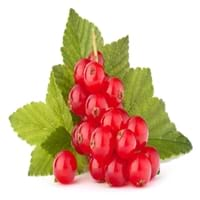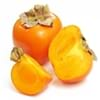Health Benefits
Acidity treatment, Cancer prevention, Good for diabetics, Prevents constipation, Prevents Anaemia
Cancer prevention, Gout treatment, Heart care, Regulation of heart rate, Treatment of rheumatism
General Benefits
Boosts immune system, Cures fever, Eye care, Fights against infections, Strengthens bones
Anti oxidant properties, Controls blood pressure, Cures fever, Digestive aid, Healing of wounds, Helps in weight loss, Strengthens bones
Skin Benefits
Anti-aging benefits, Reduces wrinkles, Skin rejuvenation
Brightens and lightens complexion, Reduces wrinkles, Treatment of acne
Hair Benefits
Protects hair
Protects hair
Allergy Symptoms
Anaphylaxis, Asthma, Breathing difficulty, Coughing, Drop in blood pressure, Hives, Skin rash, Stuffy nose, Swelling of mouth, tongue or lips, Wheezing
Abnormally rapid heart rate, Anaphylaxis, Breathing difficulty, Hives, Itching, Swallowing difficulties
Side Effects
Allergic reaction
Possibly unsafe during pregnancy
Lactating Women
Not Available
Yes
Best Time to Eat
Any time except an hour after meal
Best if taken as a breakfast (or empty stomach), As a snack in the late afternoon, Don't eat after meal, Morning time (before lunch)
Vitamin B5 (Pantothenic Acid)
Vitamin C (Ascorbic Acid)
Vitamin K (Phyllochinone)
Calories in Fresh Fruit with Peel
Calories in Fresh Fruit without Peel
Not Available
Not Available
Calories in Frozen Form
Not Available
Not Available
Calories in Dried Form
Not Available
Calories in Canned Form
Not Available
Not Available
Season
All seasons
Summer
Varieties
Dark raisins, White or golden raisins, Sultanas and Currants
Rovada, Stanza, Red Lake, Junifer and Jonkheer van Tets
Seedless Variety
Not Available
No
Color
Black, Blue, Green, Purple, Yellow
Red
Origin
Central Europe, Western Asia
Europe
Grows on
Not Available
Trees
Soil Type
Clay loam, Sandy loam
Moist, Well-drained
Climatic Conditions
Warm
Cold
Facts about
- 30th April is known as National Raisin Day.
- Fresno, California is known as raisin capital of the world.
- Half of world's raisin supply is produced in California.
- The albino version of red currants known as white currants, are often sold as different fruit.
- Red currant tea is healthy substitute for coffee.
- There are more than 150 varieties of red currants.
Top Producer
United States of America
Russia
Other Countries
Afghanistan, Argentina, Australia, Chile, China, Iran, South Africa, Turkey, Uzbekistan
Belgium, France, Germany, Ireland, Italy, Netherlands, Poland, Portugal, Scotland, Spain, Sweden, United Kingdom
Top Importer
Europe
Germany
Top Exporter
Turkey
Russia
Botanical Name
Vitis Vinifera
Ribes rubrum
Synonym
Not Available
Not Available
Subkingdom
Tracheobionta
Tracheobionta
Division
Magnoliophyta
Magnoliophyta
Class
Magnoliopsida
Magnoliopsida
Subclass
Not Available
Rosidae
Order
Vitales
Saxifragales
Family
Vitaceae
Grossulariaceae
Species
Vitis vinifera
R. rubrum
Generic Group
Grape
Saxifrage
Difference Between Raisin and Red Currant
We might think that Raisin and Red Currant are similar with respect to nutritional value and health benefits. But the nutrient content of both fruits is different. Raisin and Red Currant Facts such as their taste, shape, color, and size are also distinct. The difference between Raisin and Red Currant is explained here.
The amount of calories in 100 gm of fresh Raisin and Red Currant with peel is 299.00 kcal and 56.00 kcal and the amount of calories without peel is Not Available and Not Available respectively. Thus, Raisin and Red Currant belong to High Calorie Fruits and Low Calorie Fruits category.These fruits might or might not differ with respect to their scientific classification. The order of Raisin and Red Currant is Vitales and Saxifragales respectively. Raisin belongs to Vitaceae family and Red Currant belongs to Grossulariaceae family. Raisin belongs to Vitis genus of Vitis vinifera species and Red Currant belongs to Ribes genus of R. rubrum species. Beings plants, both fruits belong to Plantae Kingdom.









